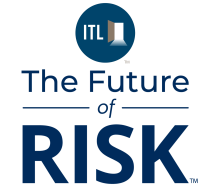As 2025 unfolds, one persistent challenge remains at the forefront: the rising cost of employee healthcare. Traditional health insurance plans continue to grow more expensive, pushing employers to seek innovative solutions to maintain both affordability and quality. Captive insurance companies are emerging as a compelling option, offering businesses a way to take control of healthcare expenses while addressing the evolving needs of their workforce. This article explores the trends shaping employee healthcare in 2025 and why businesses are finding that captive insurance can play a pivotal role.
Rising Healthcare Costs: A Pressing Challenge for 2025
Average health insurance premiums have risen by 7% in 2025, marking four consecutive years of increases, according to a report by Lending Tree. This trend is driven by increasing medical costs, expanded coverage requirements, and economic uncertainty. Employers, facing tighter budgets and a competitive labor market, are under pressure to provide attractive benefits without overburdening their finances.
The Aon 2024 Global Risk Management Survey underscores this issue, reporting a marked increase in the use of captives for managing employee benefits risks, particularly healthcare. Employers are recognizing that the traditional approach to health insurance may no longer be sustainable in the face of mounting costs.
A Solution for Modern Employee Healthcare Challenges
Captive insurance companies offer an innovative approach to managing employee healthcare. These entities allow businesses to self-insure their workforce by creating a subsidiary that assumes responsibility for healthcare coverage. By doing so, employers gain greater control over plan design, cost management, and provider networks, leading to customized and often more affordable solutions.
Key benefits of captive insurance for employee healthcare include:
- Cost Savings: By cutting out traditional insurance carriers and negotiating directly with healthcare providers, businesses can reduce administrative costs and premiums.
- Enhanced Coverage: Captives enable employers to tailor plans to meet the unique needs of their workforce, often resulting in more comprehensive coverage options.
- Risk Mitigation: Through reinsurance, captives can protect against high-cost claims, ensuring financial stability even in the face of unforeseen medical expenses.
- Data-Driven Insights: Captives provide employers with detailed claims data, empowering them to implement wellness initiatives and identify cost-saving opportunities.
The Impact of the 2025 Presidency on Employer-Sponsored Healthcare
The recent change in presidency has introduced new dynamics to the healthcare landscape. Early signals suggest potential shifts in regulatory policies affecting employer-sponsored healthcare programs. These changes are likely to emphasize affordability, transparency, and employee access, with potential tax incentives for businesses that invest in innovative healthcare solutions like captives.
Employers must remain vigilant as new legislation could affect how healthcare benefits are structured and funded. Captive insurance companies offer the flexibility to adapt quickly to regulatory changes, allowing businesses to stay compliant while maintaining control over costs and plan design.
Trends to Watch in 2025
Several emerging trends are shaping the future of employee healthcare and are likely to drive increased adoption of captive insurance:
- Increased Focus on Mental Health and Wellness: Employers are recognizing the importance of holistic health benefits, including mental health coverage and wellness programs. A survey by Wellable Labs found 80% of employers surveyed plan to increase their investments in employee mental health. Captives allow businesses to integrate these elements seamlessly into their healthcare plans.
- Customization and Flexibility: As remote and hybrid workforces continue to become the norm, employees expect benefits that cater to diverse needs and geographic locations. Captives enable tailored solutions that address these complexities.
- Technology-Driven Healthcare: Telemedicine, wearable health devices and data analytics are transforming how healthcare is delivered and managed. Captives have the flexibility to leverage these technologies to improve outcomes and control costs.
- Regulatory Changes: With new regulations expected to affect employer-sponsored health plans in 2025, captives offer businesses a way to adapt quickly and maintain compliance.
Barriers to Adoption and How to Overcome Them
Despite their advantages, captives are not without challenges. Establishing a captive requires upfront investment, expertise and careful planning. Companies with fewer than 75 employees may find it difficult to achieve the scale needed for financial viability. However, as more businesses recognize the long-term benefits, these barriers are being addressed through:
- Partnerships with Experienced Brokers and Captive Managers: Brokers and captive insurance management companies specializing in captives can guide businesses through the setup process and connect them with reinsurance providers.
- Collaborative Models: Group captives, where multiple employers share the risk, are gaining popularity as a way to make this approach accessible to smaller organizations.
- Education and Awareness: As awareness of captives grows, businesses are better equipped to weigh the costs and benefits and make informed decisions.
Preparing for the Future
The year 2025 promises to be a turning point for employee healthcare. Businesses that explore innovative solutions, such as captive insurance, will be better positioned to attract and retain top talent while controlling costs. Captives offer not only financial advantages but also the flexibility to adapt to a rapidly changing healthcare landscape.
As the challenges of rising premiums, evolving employee expectations, and shifting regulations persist, captives provide a forward-thinking solution that aligns with the needs of modern businesses. By investing in this approach, companies can secure a healthier, more stable future for both their workforce and their bottom line.








